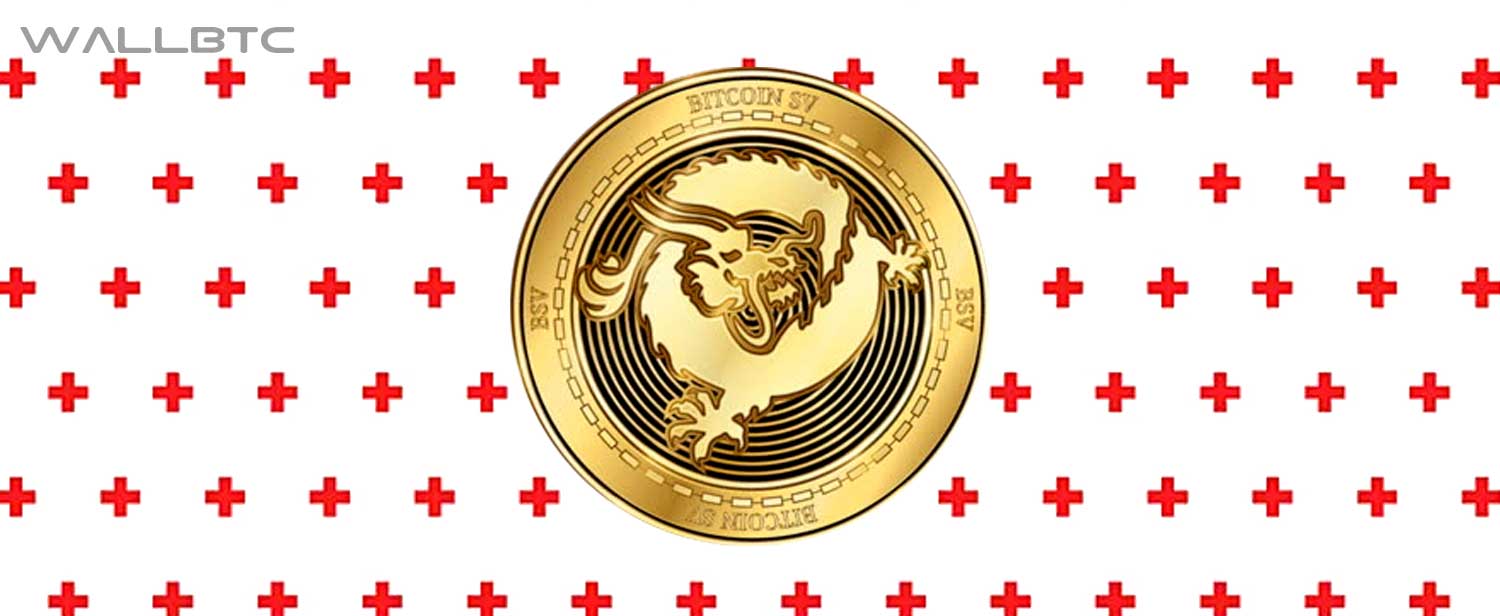2019-5-22 09:35 |
From Cash to Satoshi’s Vision, to Private, to Gold, to Atom and to Adult, the prefix Bitcoin has been used to depict and more commercially, sell and market a host of cryptocurrencies. Currently, there are 38 among the 2186 coins listed on CoinMarketCap, that sport the name “Bitcoin” as their introductory sell. This excludes the one at the top of the ladder, BTC, which at press time, held a 57% dominance over the cryptocurrency market.
With the growing number of coins leeching off its name, the need of the hour is to address this “free-loading.” Some “Bitcoin impersonators” were created through the diversion of hardforks, like the case of Bitcoin Cash [BCH] and Bitcoin Satoshi’s Vision [BSV]. Others leeched off the BTC fame by playing copy-cat, like the plethora of coins seen on CMC.
Bitcoin Cash and Bitcoin SV are undoubtedly the two main culprits of what their opponents call blatant “misrepresentation,” in a bid to entice newcomers in the cryptocurrency realm with the term “Bitcoin,” and sell them their own version of it. However, if proponents of Bitcoin Cash and Bitcoin SV are consulted, their argument entails that the current representation of BTC is not Bitcoin. Rather, BCH or BSV is the true “peer-to-peer electronic cash system.”
These cryptocurrencies often lambast their “big-brother” on the basis of scalability, block-size, community, censorship, transaction fee, mining rewards, among other topics. However, debates around these topics always end up along a futile line, semantics. My Bitcoin is the real Bitcoin, your coin is an imposter.
Twitter, a litmus test for the larger cryptocurrency community, has often been the playground for the “one true Bitcoin” debate. This article aims to address the same and hopefully, go beyond referencing the need to use the name “Bitcoin,” while not actually referring to BTC at all.
Dr. Peter McCormack, the host of WhatBitcoinDid podcast, opened Pandora’s box after he voiced his opinion on the ‘semantics debate,’ following which, he was flooded by a sea of voices commenting on the infamous naming debate.
Responding to “Bitcoin hacker” Bob McElrath, McCormack reignited the fire and questioned the perplexed feeling of crypto-newbies when seeing three “Bitcoin” named digital assets in the top-20. He further referenced the “scaling discussions,” which were often thought to be the core reason behind BTC’s hard forks
McCormack lit up the debate, tweeting,
It is hard for new people coming into Bitcoin is to understand why there is more than one Bitcoin.
Navigating the scaling discussions is super hard. Those who didn’t live through it are not hardened.
It needs telling in a simple, succinct and factually accurate way.
— Dr. Peter McCormack (@PeterMcCormack) May 18, 2019
This tweet was the comment that opened the dreaded Pandora’s Box. Many criticized the very question of “more than one Bitcoin,” contending that there was no such a thing and adding that despite McCormack’s innocent intentions, the very statement of there being “more than one” fueled the naming fire, rather than dousing it.
Armin Van Bitcoin called the statement “nonsense,” stating that newbies need to understand that there exists only one “decentralized network consensus.” The ‘failure’ of the hardforks is a testament to the same, he added. The back-and-forth that ensued between Van Bitcoin and McCormack painted a telling picture of the issue at hand. While Van Bitcoin approached the debate from a principled point of view, arguing in its favor as a “secure decentralized network of money,” McCormack pointed out the “confusion” that seduces fledglings into a non-BTC market by the usage of the term “Bitcoin.”
While many have argued on its technical aspects, none of these arguments address the simple issue voiced by McCormack which is, “which Bitcoin should I buy?” This initial question, and its corresponding semantics debate, will remain an obstacle to BTC adoption until it’s resolved.
BCH: Bitcoin Cash, not BCash!The most well-known Bitcoin “impersonator” is the fourth largest cryptocurrency on the market, Bitcoin Cash [BCH], or BCash, as its opposers contend. Roger Ver, known as “Bitcoin Jesus” for his early foray into the cryptocurrency world, out-rightly detests the current state of BTC and calls his “Bitcoin Cash,” the one true cryptocurrency and the pure reflection of Nakamoto’s whitepaper.
Often referring to Bitcoin Cash as “Bitcoin” and Bitcoin as “BTC,” Ver is known for riling up the crypto-community with his semantic missteps and being riled up on similar lines as well.
In a now “throwback” video, Ver’s semantic eccentrics were bettered by his gestures, showing the extent of the importance of the tag “Bitcoin,” when referring to Bitcoin Cash. Post the August 2017 hardfork which birthed BCH, Ver was interviewed by Bitrefill’s John Carvalho, in a video which has since gone viral.
When Carvalho referred to Ver’s preferred cryptocurrency as “BCash,” Ver was not pleased. Taking the Bitcoin-drop as a personal “insult,” Ver was quite outraged and demanded an apology as according to him, Bitcoin Cash was the true descendant of Nakamoto’s whitepaper. In Ver’s words,
“I think Bitcoin Cash has a more legitimate claim to being the Bitcoin that was outlined in the Bitcoin.org website. So, yes, that’s my position.”
The conversation between @BitcoinErrorLog and Ver also highlighted the fallacy of the perceived Bitcoin.com wallet. Carvalho suggested that it was misleading, given its name has the term ‘Bitcoin.’ Ver argued that “it is a Bitcoin wallet, and one that is operated by Bitcoin.com,” and the proof of the pudding is that it supports “Bitcoin Core and Bitcoin Cash.”
In Ver’s defense, he stated that there are only two types of people in the world who refer to Bitcoin Cash as “Bcash,” the people that, via social media, aim to “brainwash,” the unsuspecting newbies and confuse them about the true intentions of Bitcoin Cash, and the other is the victims of this brainwashing and manipulation. He further cited an article by a Jonald Fyookball titled “Why Some People Call Bitcoin Cash ‘bcash'” that would address this confusion.
Ver and many of the Bitcoin name-grabbers often use the term “Bitcoin Core,” to refer to BTC, so that it can obfuscate the line between Bitcoin and their version of Bitcoin, in Ver’s case Bitcoin Cash, which Carvalho contends, is a clever ‘co-opt.’ Interestingly, according to @BitcoinErrorLog, the only adherents of Bitcoin Cash are Roger Ver, Jihan Wu of Bitmain and their “sock-puppets,” a suggestion that enraged Ver.
Fast forwarding to this year, Ver stated that Bitcoin, as defined by Nakamoto in the original whitepaper resembles Bitcoin Cash in 2019 than the modern-day Bitcoin. The January 17 tweet was accompanied with the first page of the whitepaper with the term “peer-to-peer version of electronic cash,” and “online payments,” highlighted, to indicate the core similarities to Bitcoin Cash. This claim was met by such fervent opposition by the Bitcoin community, that many claimed Ver was trying to borderline scam newbies by misrepresenting Bitcoin, similar to the McCormack initiated debate.
Source: Twitter
Furthermore, Ver stands as the CEO of Bitcoin.com another point of contention, due to the prominence of “Bitcoin,” and the absence of “Cash.” Bitcoin.com has, on numerous occasions, been lambasted for a relentless pro-BCH stance.
To point out one, among many, of such a pro-BCH narrative, take the action by Thailand’s financial watchdog on Bitcoin and Bitcoin Cash as an example. The Thai SEC, back in March, announced that three cryptocurrencies, namely Bitcoin Cash, Ethereum Classic [ETC], and Litecoin [LTC] cannot be used as investment tools within the country, the cryptos that remained were Bitcoin, Ethereum [ETH], XRP, and Stellar Lumens [XLM].
Despite the crux of the announcement being the booting out of the three cryptocurrencies, including Bitcoin Cash, new.bitcoin.com reported that the announcement pertained to the inclusion of BTC, ETH, XRP, and XLM by the financial watchdog, a blatant misrepresentation. Back in July 2018, the SEC approved the seven digital assets and the March amendment was the exclusion of BCH, LTC, and ETC. However, Bitcoin.com quite obviously failed to report the removal of Bitcoin Cash as it didn’t fit their pro-BCH narrative.
Source: News.Bitcoin.com
Source: AMBCrypto
BSV: Satoshi’s Vision not by SatoshiThe other “copy-cat” of the name “Bitcoin,” and the claim of being the original version of Satoshi Nakamoto’s vision is Bitcoin SV, the digital asset created after Bitcoin Cash’s November 2018 hardfork. Following the same, the market crashed, and the crypto has since not only claimed to be the true Bitcoin, but the BSV creator has also claimed to be the original architect of Bitcoin itself.
Bitcoin Satoshi’s Vision is spearheaded by Craig Wright, the touted brain behind the project and the marketing arm of Calvin Ayre and his crypto-media house, Coingeek. The duo broke away from Roger Ver and Jihan Wu’s Bitcoin Cash family, citing the need for larger blocks based on their interpretation of the original vision by the creator of Bitcoin.
Since the BSV project began, much like the BCH affair, the term “Bitcoin,” was used as a marketing ploy to bring in unsuspecting novices. However, with the dubious suffix of “Satoshi’s Vision,” rather than the plain “Cash,” most newbies didn’t fall head-first for the BSV project, especially with the community calling it out as a “scam.” Wright’s antics did not help the case either. The nChain “chief scientist” relentlessly claimed to be Satoshi Nakamoto, with many speculating that “Faketoshi’s” claims were only to sell his BSV project.
Bitcoin SV’s antics, in absolute terms, failed to become a contagion because the community learnt its lesson and shot down its BTC-claims almost immediately. The slew of delistings that have torn down the coin’s market cap to 15th on the chart. In fact, BSV is closer in terms of ranking to Dogecoin [DOGE], a cryptocurrency born out of a literal meme, than the coin it claims to be the original vision of, Bitcoin.
Source: CoinGeek News
Coingeek, the media house of the BSV project, owned and controlled by Calvin Ayre, has stretched out Bitcoin impersonations and obvious attacks. One look at their “News” category tells you all you need to know about their stance. Coingeek bluntly refers to BTC as “Bitcoin Core,” and takes aims at the block size debate that gave birth to these “con-coins.”
Additionally, Coingeek, completes every article on their platform with a sort of disclaimer spelling out the demarcation between BTC and BSV. Referring to BTC as “Bitcoin Core (SegWit)” and Bitcoin Cash as “BCH,” “BCH-ABC,” or “BAB coins,” the disclaimer reads,
Source: CoinGeek
Metal and Carbon, not crypto?Bitcoin Gold [BTG], and Bitcoin Diamond [BCD] are the only other Bitcoin impersonators in the top-100, with the former on the 28th spot, amassing a market cap of under $380 million and the latter on the 42nd spot, valued at $187.39 million.
BTG followed the footsteps of Bitcoin Cash, forking away from BTC back in October 2017 after citing mining difficulties. Much like the mining of Gold, BTG aimed to make mining less of a specialized task, with reference to easing the infrastructure around it. Touting the “post-mine” feature as an important differentiator, BTG’s creators stated that the devs could mine as many as 100,000 coins after the hardfork and place them into “endowment,” in order to fund the BTG ecosystem.
From Diamond to Gold, BCD follows the same “source code” based on Bitcoin, with the main difference pertaining to the divisibility of the crypto. Bitcoin Diamond is supplied 10 times more than Bitcoin, a ploy which was referred to as “pure marketing” by Jimmy Song, the Bitcoin developer and author of “Programming Bitcoin.”
Song’s blog post detailing BCD read,
“The main difference with Bitcoin Diamond is that they multiplied the supply by 10. If you had 1 BTC before block 495866, you now have 10 BCD. This is done by moving the decimal point rather than making the coin more divisible. That is, with Bitcoin, 100 million satoshi = 1 BTC. With Bitcoin Diamond, 10 million satoshi = 1 BCD. It’s really just pure marketing.”
Other notable Bitcoin name-grabbers include,
• Bitcoin Atom #559
• Bitcoin Private #735
• Bitcoin Interest #751
• Bitcoin Plus #847
• BitcoinZ #848
• eBitcoin #917
• 0xBitcoin #926
• Bitcoin Incognito #970
• Bitcoin Zero #1124
• BitcoiNote #1141
Going back to the Twitter thread which led us back down this rabbit hole that is the Bitcoin-naming drama, there is only one Bitcoin, in principle, based on the opinions of its proponents. The digital asset that was curated by Nakamoto in the original whitepaper, still remains today, as many have attested that the 38 ‘Bitcoins’ that occupy positions on crypto-market aggregators use the name Bitcoin to ‘serve their own need’ as a marketing ploy, while claiming that their version of “Bitcoin” follows the original protocol.
Whether it’s related to transaction fees, block size, coin supply, mining difficulty or other forks in the road leading to the need to hardfork away, cryptocurrencies that seem to veer away from the “core” often retain the “core” name, ‘Bitcoin.’ Despite overwhelmingly being opposed to BTC, these cryptocurrencies still use the name “Bitcoin,” citing noble reasons like returning to the true nature of the original protocol and wanting to reform the current state of “Bitcoin.”
To quote John Carvalho in the previously highlighted video, “Bitcoin is not a business,” but one look at the market tells you otherwise. With Bitcoin impersonators littered throughout the cryptocurrency market and each claiming that they are the true iteration of Nakamoto, its easy to buy the “Bitcoin bid,” and blindly enter a co-opt brand.
The nexus of the cryptocurrency world stretches to and from several industries, with a host of naive investors flocking by the day. By “co-opting” the brand, the various entities that operate on “Bitcoin – the business” paradigm are baiting the unsuspecting by offering them a curated version of Bitcoin, but not the actual thing. Hence, the discontent from “maximalists.”
Marketing or not, there is an apparent desire to mirror the king coin’s laminating effect that seems to shadow the rest of the market. And as naming ceremonies indicate, the only way to shine in the dark is by calling yourself “Bitcoin.”
The post Bitcoin? Bitcoin Cash? Bitcoin Satoshi’s Vision? Will the real Bitcoin please stand up? appeared first on AMBCrypto.
origin »Bitcoin (BTC) íà Currencies.ru
|
|















